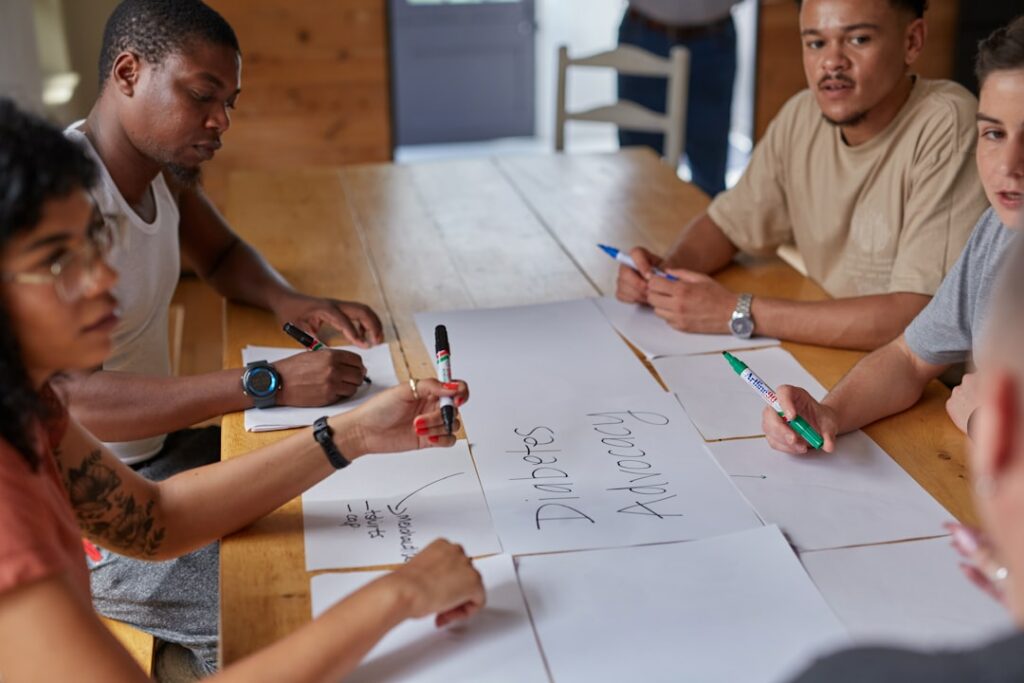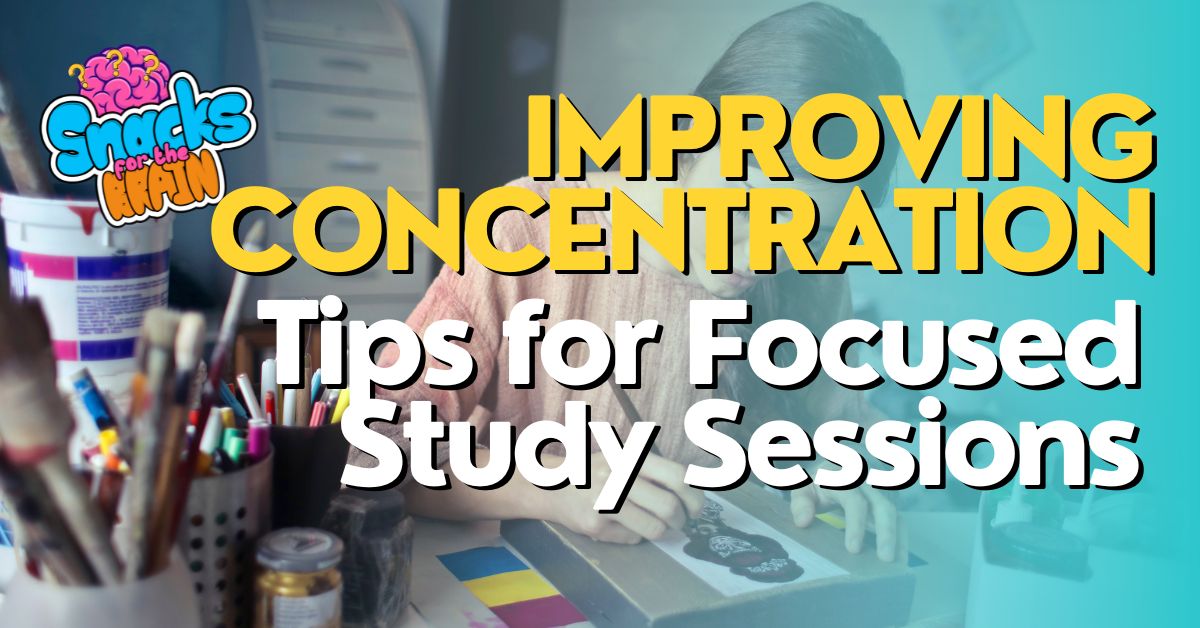Brainstorming is a creative problem-solving technique that involves generating a large number of ideas in a short period of time. It is a collaborative process that encourages participants to think outside the box and come up with innovative solutions. Brainstorming is widely used in various fields, including business, education, and design, as it helps to stimulate creativity and generate new perspectives.
The importance of brainstorming in problem-solving and decision-making cannot be overstated. It allows individuals or groups to explore different possibilities and consider multiple perspectives. By encouraging free thinking and open discussion, brainstorming helps to break down barriers and overcome mental blocks. It also promotes collaboration and teamwork, as participants build on each other’s ideas and work together towards a common goal.
There are several different brainstorming techniques that can be used to facilitate the process. Some of the most common techniques include mind mapping, role storming, random word association, and divergent thinking. Each technique has its own unique approach and can be used in different situations depending on the desired outcome.
Key Takeaways
- Brainstorming is a technique used to generate creative ideas through group collaboration.
- Group brainstorming can lead to increased creativity, diverse perspectives, and a sense of ownership among team members.
- Preparing for a successful brainstorming session involves setting clear goals, selecting the right participants, and creating a comfortable environment.
- Ground rules for effective brainstorming include encouraging all ideas, avoiding criticism, and building on each other’s ideas.
- Divergent thinking techniques like mind mapping and random word association can encourage creativity and novelty, while convergent thinking techniques like role storming can help narrow down ideas and find solutions.
- Mind mapping is a visual tool that helps organize ideas and connections, while role storming encourages participants to step into different perspectives.
- Random word association can help break free from conventional thinking and generate new ideas.
- Evaluating and selecting the best ideas from a brainstorming session involves considering feasibility, impact, and alignment with goals.
Understanding the Benefits of Group Brainstorming
While individual brainstorming can be effective in generating ideas, group brainstorming offers several advantages over its individual counterpart. One of the main benefits of group brainstorming is the diversity of perspectives it brings. When individuals from different backgrounds and experiences come together, they bring unique insights and ideas to the table. This diversity can lead to more innovative and creative solutions.
Group brainstorming also encourages collaboration and teamwork. When individuals work together in a group setting, they can build on each other’s ideas and expand on them. This collaborative process often leads to more refined and well-developed ideas. Additionally, group brainstorming allows for immediate feedback and discussion, which can help to refine ideas further.
There are many examples of successful group brainstorming sessions that have led to groundbreaking innovations. For example, the development of the iPhone was the result of a series of brainstorming sessions involving a team of engineers, designers, and marketers. The team worked together to generate ideas and refine them until they came up with the revolutionary concept of a touchscreen smartphone. This example demonstrates the power of group brainstorming in driving innovation and finding solutions to complex problems.
Preparing for a Successful Brainstorming Session
To ensure a successful brainstorming session, it is important to properly prepare beforehand. This involves several key steps, including identifying the problem or goal to be addressed, selecting the right participants, setting a clear agenda and timeline, and providing necessary materials and resources.
Firstly, it is crucial to clearly define the problem or goal that the brainstorming session aims to address. This will help to focus the discussion and ensure that participants are on the same page. By clearly articulating the problem or goal, participants can direct their thinking towards finding relevant solutions.
Selecting the right participants is also essential for a successful brainstorming session. It is important to include individuals who have diverse perspectives and expertise related to the problem or goal at hand. This will ensure that different viewpoints are represented and that a wide range of ideas are generated.
Setting a clear agenda and timeline is another important aspect of preparation. This will help to keep the session focused and on track. By outlining specific objectives and allocating time for each stage of the brainstorming process, participants will have a clear understanding of what is expected of them and how much time they have to generate ideas.
Finally, providing necessary materials and resources is crucial for a productive brainstorming session. This may include whiteboards or flip charts for visualizing ideas, sticky notes or index cards for recording ideas, and any relevant research or background information that participants may need. By ensuring that all necessary materials are readily available, participants can fully engage in the brainstorming process.
Setting Ground Rules for Effective Brainstorming
To ensure an effective brainstorming session, it is important to establish ground rules that create a safe and respectful environment for participants. These ground rules help to foster a positive and collaborative atmosphere, where all ideas are valued and encouraged. Some key ground rules for effective brainstorming include establishing a safe and respectful environment, encouraging active participation and equal contribution, avoiding criticism and judgment, and focusing on quantity over quality in the initial stage.
Establishing a safe and respectful environment is crucial for creating an atmosphere where participants feel comfortable sharing their ideas. This involves setting clear expectations for behavior and ensuring that all participants are treated with respect. By creating a safe space, participants will be more likely to share their ideas openly and honestly.
Encouraging active participation and equal contribution is another important ground rule for effective brainstorming. It is important to ensure that all participants have an opportunity to contribute their ideas and that no one dominates the discussion. By actively involving everyone in the brainstorming process, a wider range of perspectives can be considered, leading to more diverse and innovative ideas.
Avoiding criticism and judgment is essential during the brainstorming process. It is important to create an environment where all ideas are welcomed and valued, regardless of their feasibility or practicality. By suspending judgment and deferring evaluation until later stages of the process, participants can freely explore different possibilities without fear of criticism.
Focusing on quantity over quality in the initial stage of brainstorming is another key ground rule. By encouraging participants to generate as many ideas as possible, without worrying about their quality or feasibility, a larger pool of ideas can be generated. This allows for more possibilities to be explored and increases the chances of finding innovative solutions.
Divergent Thinking: Encouraging Creativity and Novelty
Divergent thinking is a key component of the brainstorming process. It involves generating a large quantity of ideas without judgment or evaluation. Divergent thinking encourages creativity and novelty by exploring different possibilities and considering multiple perspectives.
There are several techniques that can be used to encourage divergent thinking during a brainstorming session. One technique is to use prompts or stimuli to spark new ideas. This can be done by presenting participants with a random word, image, or object and asking them to generate ideas based on it. This technique helps to break free from conventional thinking and encourages participants to make new connections and associations.
Another technique for promoting divergent thinking is to encourage wild or unconventional ideas. By explicitly stating that all ideas are welcome, regardless of their feasibility or practicality, participants are encouraged to think outside the box and explore unconventional solutions. This can lead to breakthrough ideas that may not have been considered otherwise.
Examples of divergent thinking in action can be seen in the field of design. Designers often use brainstorming techniques to generate a wide range of ideas for a given problem or challenge. By encouraging divergent thinking, designers are able to explore different possibilities and come up with innovative and creative solutions.
Convergent Thinking: Narrowing Down Ideas and Finding Solutions

While divergent thinking is important for generating a large quantity of ideas, convergent thinking is necessary for narrowing down those ideas and finding practical solutions. Convergent thinking involves evaluating and selecting the best ideas based on specific criteria.
There are several techniques that can be used to facilitate convergent thinking during a brainstorming session. One technique is to use criteria or guidelines to evaluate ideas. This involves establishing specific criteria that the ideas must meet in order to be considered viable solutions. By using these criteria as a framework for evaluation, participants can objectively assess the ideas and determine which ones are most likely to be successful.
Another technique for promoting convergent thinking is to encourage discussion and debate. By engaging in a thoughtful and constructive dialogue, participants can critically evaluate the ideas and challenge each other’s assumptions. This helps to refine the ideas further and identify potential flaws or limitations.
Examples of convergent thinking in action can be seen in the field of business. When a company is faced with a problem or challenge, brainstorming sessions are often used to generate a wide range of ideas. Once the ideas have been generated, a process of convergent thinking is used to evaluate and select the best ideas for implementation. This involves considering factors such as feasibility, cost-effectiveness, and potential impact.
Mind Mapping: Visualizing Ideas and Connections
Mind mapping is a visual brainstorming technique that helps to organize and structure ideas. It involves creating a visual representation of the ideas and their connections using diagrams or charts. Mind mapping is particularly useful for capturing complex or interconnected ideas and for visually representing the relationships between them.
To create a mind map, start by writing the main idea or problem in the center of a blank page or whiteboard. Then, branch out from the center with subtopics or related ideas. Continue to branch out further with more specific details or connections. Use lines, colors, and symbols to visually represent the relationships between the ideas.
There are several benefits of using mind maps in brainstorming. Firstly, mind maps help to stimulate creativity by allowing participants to visually explore different possibilities and connections. By organizing ideas in a visual format, participants can see patterns and relationships that may not be immediately apparent in a traditional list format.
Mind maps also help to facilitate collaboration and communication during a brainstorming session. By creating a visual representation of the ideas, participants can easily share and discuss their thoughts with others. This promotes a more interactive and engaging brainstorming process.
Role Storming: Stepping into Different Perspectives
Role storming is a brainstorming technique that involves stepping into different perspectives or roles to generate new ideas. It encourages participants to think from the point of view of someone else, such as a customer, competitor, or even an inanimate object. By adopting different roles, participants can gain new insights and generate fresh ideas.
To conduct a role storming session, start by assigning each participant a specific role or perspective to adopt. Encourage participants to fully immerse themselves in the role and to think and speak from that perspective. This can be done through role-playing exercises or by simply asking participants to imagine themselves in the role.
There are several benefits of role storming in generating new ideas. Firstly, it helps to break free from conventional thinking by encouraging participants to step outside of their own perspectives. By adopting different roles, participants can challenge their own assumptions and consider new possibilities.
Role storming also helps to foster empathy and understanding. By stepping into the shoes of someone else, participants can gain a deeper understanding of their needs, desires, and motivations. This can lead to more customer-centric or user-centered solutions.
Random Word Association: Breaking Free from Conventional Thinking
Random word association is a brainstorming technique that involves using random words as prompts to generate new ideas. It helps to break free from conventional thinking and encourages participants to make new connections and associations.
To use random word association in brainstorming, start by selecting a random word or phrase. This can be done by flipping through a dictionary or using an online random word generator. Once the word has been selected, ask participants to generate ideas based on that word. Encourage them to make connections between the word and the problem or goal at hand.
Random word association is particularly useful for stimulating creativity and generating novel ideas. By introducing a random element into the brainstorming process, participants are forced to think outside the box and consider new possibilities. This can lead to breakthrough ideas that may not have been considered otherwise.
Examples of random word association in action can be seen in the field of advertising. Advertisers often use this technique to come up with creative and attention-grabbing slogans or taglines. By making unexpected connections between random words and the product or brand, advertisers can create memorable and impactful campaigns.
Evaluating and Selecting the Best Ideas from a Brainstorming Session
Once a brainstorming session has been conducted and a large number of ideas have been generated, it is important to evaluate and select the best ideas for further development and implementation. This involves using specific criteria to assess the ideas and determine their feasibility, impact, and potential for success.
When evaluating ideas, it is important to consider factors such as feasibility, cost-effectiveness, alignment with the problem or goal, and potential impact. Feasibility refers to the practicality of implementing the idea, taking into account factors such as resources, time, and expertise. Cost-effectiveness refers to the potential return on investment or value that the idea can bring. Alignment with the problem or goal ensures that the idea directly addresses the issue at hand. Potential impact refers to the potential positive outcomes or benefits that the idea can bring.
Techniques for selecting the best ideas include voting, ranking, or using a decision matrix. Voting involves allowing participants to vote for their favorite ideas based on specific criteria. Ranking involves assigning a numerical value or score to each idea based on specific criteria. A decision matrix involves creating a matrix that compares each idea against specific criteria and assigning a score or rating to each idea.
Once the best ideas have been selected, it is important to follow up and implement them. This involves creating an action plan, assigning responsibilities, and setting deadlines. By taking concrete steps towards implementing the ideas, they can be turned into tangible solutions that address the problem or goal at hand.
In conclusion, brainstorming is a powerful tool for generating new ideas and finding solutions to complex problems. By understanding the different techniques and approaches to brainstorming, you can create a successful and productive brainstorming session that leads to innovative and effective solutions. Whether you are working individually or in a group, brainstorming can help to stimulate creativity, encourage collaboration, and generate fresh perspectives. By following the steps outlined in this article, you can harness the power of brainstorming and unlock your creative potential.
If you’re interested in improving your memory and unlocking your brain’s full potential, you might find this article on “How to Improve Your Memory: Unconventional Ways to Achieve It” helpful. It provides unique techniques and strategies that go beyond the usual methods of memory improvement. From using visualization techniques to incorporating physical exercise into your routine, this article offers a fresh perspective on enhancing your memory. Check it out here for some unconventional ways to boost your memory power.
FAQs
What is brainstorming?
Brainstorming is a group creativity technique used to generate a large number of ideas in a short amount of time. It involves a group of people coming together to share their ideas and thoughts on a particular topic.
What are the benefits of brainstorming?
Brainstorming can help generate a large number of ideas in a short amount of time, which can lead to innovative solutions and new perspectives. It can also help build team morale and encourage collaboration and communication among team members.
What are some common brainstorming techniques?
Some common brainstorming techniques include mind mapping, free writing, and round-robin brainstorming. Mind mapping involves creating a visual diagram of ideas, while free writing involves writing down all ideas that come to mind without judgment. Round-robin brainstorming involves each team member sharing one idea at a time in a round-robin fashion.
How can I ensure a successful brainstorming session?
To ensure a successful brainstorming session, it is important to establish clear goals and guidelines, encourage participation from all team members, and create a non-judgmental environment where all ideas are welcome. It is also important to set a time limit and assign a facilitator to keep the session on track.
What are some common pitfalls to avoid during a brainstorming session?
Common pitfalls to avoid during a brainstorming session include criticizing or dismissing ideas, allowing one or two team members to dominate the conversation, and not setting clear goals or guidelines. It is also important to avoid distractions and stay focused on the topic at hand.






